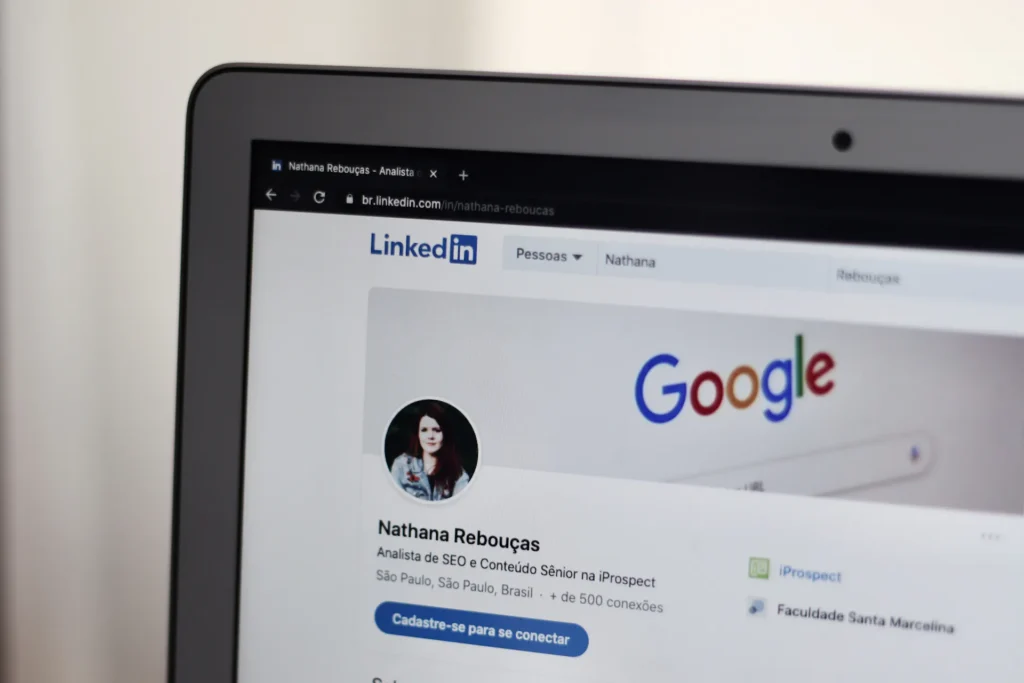Cold Email vs LinkedIn Message — Which is More Effective?
Navigating the ever-changing waters of lead generation requires a finely-tuned outreach strategy. Today, the burning question on sales teams’ minds is: Should we opt for cold email vs LinkedIn message? Let’s find out.
Cold emails and LinkedIn messages are not universally applicable strategies. Your choice could determine the success or failure of your lead generation efforts. So it’s imperative to understand the unique strengths of each method.
Cold emails, an enduring primary channel for reaching customers, have continually proven their worth. They’ve been around, weathering various shifts in marketing trends, and continue to hold their ground in the modern digital era.
Although a newer player in the game, LinkedIn messages offer a direct and refreshing approach. They’ve quickly gained popularity, with an almost perfect open rate that’s hard to ignore.
However, let’s not forget that cold emails still pack a punch. Top sales representatives report open rates averaging between 50% and 80% for cold emails. You can’t ignore such a huge number.
Both cold emails and LinkedIn messages have demonstrated their effectiveness in reaching potential leads. However, your campaign’s objectives and target audience should guide your decision between these two. Remember, though, that cold emails have a proven track record and offer a reliable option catering to a wide range of demographics.
Cold Email: Overview
Cold emailing, a linchpin in email outreach, represents an approach where you connect with people without previous interactions with you. In the quest to find your perfect email outreach and strategy, cold emailing shines as a potent lead-generation tool designed to captivate potential customers.

Advantages
A cold email comes packed with several advantages:
Broad Reach: Unlike LinkedIn messages or Inmails, cold emails aren’t just for LinkedIn users. They have the potential to reach anyone with an email account, leading to expansive email campaigns and higher acceptance rates.
Personalization: Cold emails can be tailored to the recipient. This personal touch enhances customer engagement and makes your message stand out in a cluttered inbox.
Disadvantages
However, cold emails also have their share of challenges:
Spam Filters: If not carefully crafted, automated cold emails can trigger spam filters, causing your message to land in the recipient’s spam folder, thus reducing visibility.
Lower Open Rate: The open rate for cold emails is lower than for LinkedIn messages. This could potentially impact your response rates and the overall effectiveness of your various outreach campaigns.
Despite these challenges, with the right strategy, cold email can still outshine LinkedIn outreach, making it a primary outreach channel used for prospecting leads.
LinkedIn Outreach: Overview

LinkedIn outreach—an increasingly popular prospecting method—is all about connecting sales reps with potential customers through LinkedIn messages.
These messages, a part of LinkedIn’s communication automation tools, are aimed at generating leads and fostering professional relationships.
Advantages
LinkedIn messages offer several distinct advantages:
Targeted Audience: LinkedIn’s vast professional network allows you to connect with specific demographics, making your outreach more precise and relevant.
Professional Context: Unlike email, LinkedIn outreach occurs within a professional environment, increasing the likelihood of meaningful engagement.
Disadvantages
However, LinkedIn messages are not without their drawbacks:
Limited Reach: LinkedIn outreach is confined to LinkedIn members, potentially limiting your target market.
Platform Restrictions: Premium LinkedIn features, such as LinkedIn InMail, may require a Sales Navigator Account or other paid subscriptions, which could be a barrier for some sales teams.
While LinkedIn messages have their limitations, they remain a powerful tool in the outreach arsenal, complementing cold email strategies and offering a valuable alternative for lead generation.
Cold Email: Best Practices
When defining your outreach strategy, understanding cold email best practices can be a game-changer. These are methods honed by sales teams and marketing professionals, designed to increase your cold email wins, generate leads, and outperform LinkedIn messages in certain contexts.
Subject Line
The subject line is the front door of your cold email. An effective subject line can differentiate between the spam folder and a potential customer’s attention. Here are some subject line best practices:
Conciseness: Your subject is your first impression. Make it short and direct, captivating enough to bypass the spam filter and grab attention.
Personalization: Tailor your subject to the recipient. Mentioning a common connection or recent company event can trigger interest and show that you’ve done your homework.
Email Body
The body of your cold email is your pitch. Some best practices to follow include:
Relevance: Ensure your message is pertinent to your recipient. Irrelevant content can lead to your email being flagged as Spam, hurting your email deliverability.
Personalization: Avoid generic, automated messages. Make your recipient feel unique, emphasizing how your proposal could benefit them.
Brevity and Clarity: Respect your recipient’s time. Keep your message concise and clear. This makes it easy for them to understand and respond.
Follow-up Strategy
Finally, the follow-up cold outreach strategy is an essential piece of the whole cold outreach and email puzzle. Some things to remember include:
Persistence: Don’t be discouraged by a lack of response. Most companies require multiple touches before they engage, so plan a series of follow-ups.
Timing and Content: Time your follow-ups strategically, and make sure each one adds value rather than simply repeating the initial email. Respect your recipient’s time and space.
LinkedIn Messages: Best Practices
In the digital age, mastering LinkedIn messages can be a game-changer for businesses and professionals. LinkedIn has morphed from a simple professional networking site to a robust platform for lead generation, sales prospecting, and more.
To effectively send LinkedIn InMails, some practices can significantly increase your outreach success rate.
Personalized Connection Requests
Sending a connection request is the first step towards building a professional relationship on LinkedIn. However, sending a generic invitation might not encourage the recipient to accept your request.
Here’s how to make your connection request more compelling:
The Right Approach: When you send connection requests, personalization is key. A tailored request increases your chances of acceptance and establishes a positive tone for future communications.
Crafting Your Message: A well-crafted LinkedIn message can make all the difference. Mention shared interests or experiences and explain why you’re interested in connecting. This shows that you’re genuinely invested in the relationship.
Message Content
Once your connection request is accepted, sending meaningful and engaging messages is next. The goal of sending messages is to foster a relationship that adds value for both parties. Here’s how to create an impactful LinkedIn message:
Personalization and Relevance: Similar to connection requests, the content of your regular LinkedIn messages should be personalized and relevant. This ensures your message is engaging and fosters a connection with the recipient.
Structure for Impact: Break your message into small, digestible sections. Be clear, concise, and ensure your main points stand out.
Follow-up Strategy
Effective follow-ups are essential for maintaining communication and building relationships on LinkedIn. The timing and content of your follow-ups can significantly impact their effectiveness.
Here’s how to navigate this crucial aspect of sending a LinkedIn message:
Consistent Follow-ups: Follow-ups are crucial. If you don’t hear back after your initial LinkedIn message, send follow-up messages with new, valuable information. This can help keep you top of mind and increase response rates.
Timing and Content: Space your follow-ups well, and avoid bombarding your connections with too many messages too quickly. Add value to each message, and keep your tone professional yet friendly.
Cold Email: Metrics and Measurement
In the world of cold email and linkedin outreach now, measuring key metrics is pivotal. These metrics provide a snapshot of your cold email campaign’s performance, aiding you in refining your email marketing approach.
Let’s dive into three critical metrics for cold emails: open rates, reply rates, and conversion rates.
Open Rates
The open rate is the percentage of recipients who have opened your cold email. This metric is essential, marking the initial phase of your sales funnel. A good open rate for cold emails typically hovers between 15 and 25%.
However, high open rates are just the beginning—the content of your cold emails drives engagement.
Reply Rates
The reply rate signifies the percentage of recipients who responded to your cold email. This metric is crucial as it denotes your message’s level of engagement and interest. Industry benchmarks for cold emails point to a 1-5% reply rate.
Higher reply rates for personalized emails often suggest your message resonates with the right person in your audience.
Conversion Rates
The conversion rate is the percentage of recipients who took the desired action after reading your cold email, such as purchasing a product or scheduling a meeting with your sales team.
While conversion rates vary across different industries, a 2-5% range is generally considered a solid benchmark in cold email campaigns.
LinkedIn Message: Metrics and Measurement
LinkedIn messages are a powerful tool for generating leads and driving sales enablement. Like cold emails, tracking key metrics for LinkedIn messages is essential. Let’s explore three critical LinkedIn metrics: acceptance, reply, and conversion rates.
Acceptance Rate
The acceptance rate is the percentage of LinkedIn requests that the recipients accept. It’s an important metric to gauge the effectiveness of your connection request messages and your targeting strategy.
LinkedIn connection request rates of acceptance are industry benchmarks that typically range between 20 and 50%. Consider optimizing your LinkedIn account and profile and crafting personalized requests to boost your account acceptance rates.
Reply Rates
The reply rate is the percentage of recipients who responded to your LinkedIn messages. This metric is crucial as it demonstrates your message’s engagement level and interest. Industry benchmarks for LinkedIn message reply rates hover around 10–15%.
Conversion Rates
The conversion rate is the percentage of recipients who take the desired action after reading your LinkedIn message, such as booking a meeting or joining your pipeline.
While conversion rates vary across industries, a 2-5% range is generally considered a good benchmark for LinkedIn message campaigns. Sales Navigator is an excellent tool to refine targeting and reach senior-level influencers, ultimately driving higher conversion rates.
Cold Email: Tools and Resources
A successful cold email campaign requires the right tools and resources to maximize your email outreach and response rate. Let’s explore some popular email platforms, templates, and tracking tools that can help elevate your cold email strategy.
Email Platforms
Email platforms are essential for managing your cold email outreach effectively. These platforms offer features tailored for cold emails, such as personalization, scheduling, and deliverability optimization.
Nureply, for instance, leverages artificial intelligence to write customized emails based on publicly available data, helping users increase their email replies. A dedicated email platform can improve your response rate and overall email vs. LinkedIn performance.
Email Templates
Cold email templates are pre-written messages designed to streamline your outreach process. They offer a starting point for crafting personalized emails, saving time, and maintaining consistency across email campaigns.
Resources like HubSpot, Close, Sales Hacker, and Nureply provide a wealth of cold email templates to cater to various industries and scenarios. Customize each template to make your emails stand out in your recipients’ inboxes.
Email Tracking and Analytics
Monitoring your cold email performance is crucial for refining your strategy and driving better results. Tools like Mailtrack, Yesware, Mixmax, and Nureply’s AI-powered analytics provide tracking and insights to help gauge your cold email vs. LinkedIn outreach success, optimize domain reputation, and avoid spam folders, ensuring high open rates, response rates, and click-through rates.
LinkedIn Message: Tools and Resources
To maximize how you send LinkedIn InMails, it’s essential to leverage the right tools and resources. Below, we’ll discuss how LinkedIn Premium, templates, and analytics can contribute to your email and LinkedIn outreach success.
LinkedIn Premium
Upgrading to LinkedIn Premium can significantly enhance your LinkedIn messaging capabilities. This premium LinkedIn feature includes access to LinkedIn InMail messages, which allow you to send LinkedIn messages directly to anyone on the platform, even without first-degree connections.
With LinkedIn Premium, you’ll also benefit from increased visibility and advanced search filters, making targeting the right people in your outreach easier.
LinkedIn Templates
Using LinkedIn message templates can streamline your outreach process and save time. Customize these templates to craft personalized, effective messages that resonate with your target audience.
Resources like AeroLeads, Sales Navigator, and HubSpot offer templates for LinkedIn InMails tailored for various industries and scenarios.
LinkedIn Analytics
Tracking and analyzing your LinkedIn InMails performance is crucial for refining your strategy. Tools such as Shield and Dux-Soup provide LinkedIn analytics, helping you measure the impact of your outreach efforts.
Monitoring key metrics in your LinkedIn InMail strategy allows you to make data-driven decisions and optimize your overall cold email vs. LinkedIn strategy.
Choosing the Right Outreach Method
When crafting your outreach strategy, the choice between cold email and LinkedIn InMail depends on various factors, including understanding your audience and potentially integrating both methods.
Factors to Consider
When deciding whether to send messages using LinkedIn InMails or stick to traditional cold calling or emailing, consider factors such as response rate, the formality of your message, and your target recipient’s preferred communication channel.
For instance, if your target is more active on LinkedIn, sending InMails might yield better results.
Assessing Your Audience
Understanding your audience is vital. It’s essential to gauge where they spend their time online and which communication method they prefer.
If your audience is full of LinkedIn power users, send InMails; if they’re more traditional, email remains a solid choice.
Balancing Both Methods
It’s not always about choosing one over the other; sometimes, the best approach combines both. For instance, you could initiate contact with a LinkedIn InMail and follow up with an email.
Balancing both methods lets you maximize your outreach efforts and cover all bases.
Conclusion
Mastering the dynamics of cold email vs. LinkedIn entails knowing your audience and capitalizing on the strengths of each tool. While LinkedIn automation tools aid in specific LinkedIn prospecting and crafting persuasive LinkedIn InMails, these advantages should not overshadow the benefits of cold emails.
Indeed, LinkedIn InMails boast impressive open rates. However, this should be viewed as an addition to a well-crafted cold email strategy, which offers more extensive reach and personalization for your sales team. The goal isn’t merely to score cold email wins but to strategically utilize both methods to bolster your sales pipeline.
You can maximize your lead generation strategy by combining an enhanced LinkedIn profile and engaging LinkedIn InMails with a robust cold email campaign. Tools like Nureply can significantly boost your cold email strategy with AI-driven personalization, leveraging publicly available data from sources such as LinkedIn profiles, websites, and blogs.
This approach helps ensure your emails avoid the spam folder while seamlessly integrating with your LinkedIn initiatives. Yet, remember that the power of cold emails, with their broad reach and versatility, often makes them a stronger choice in the game of lead generation.


